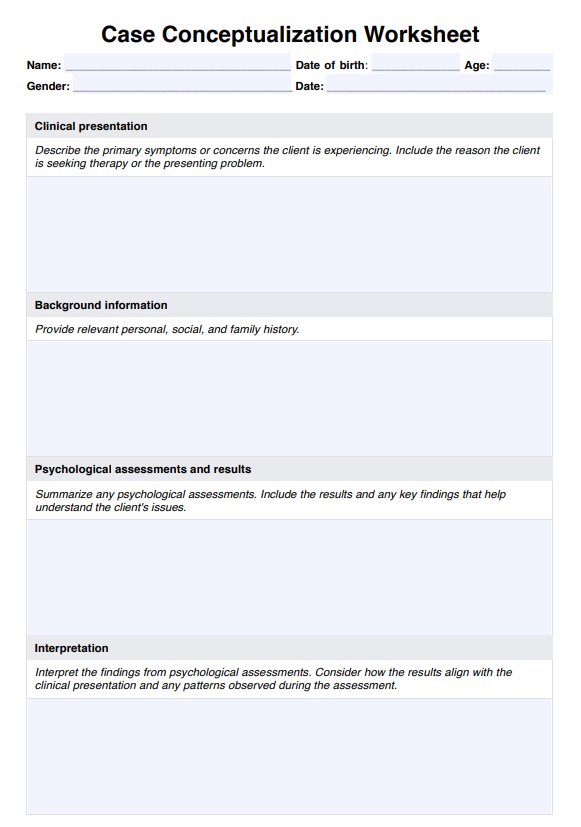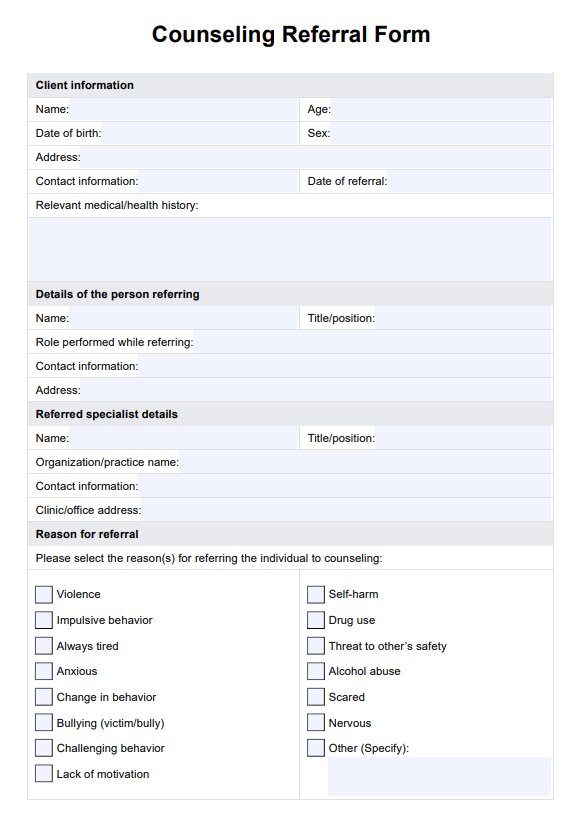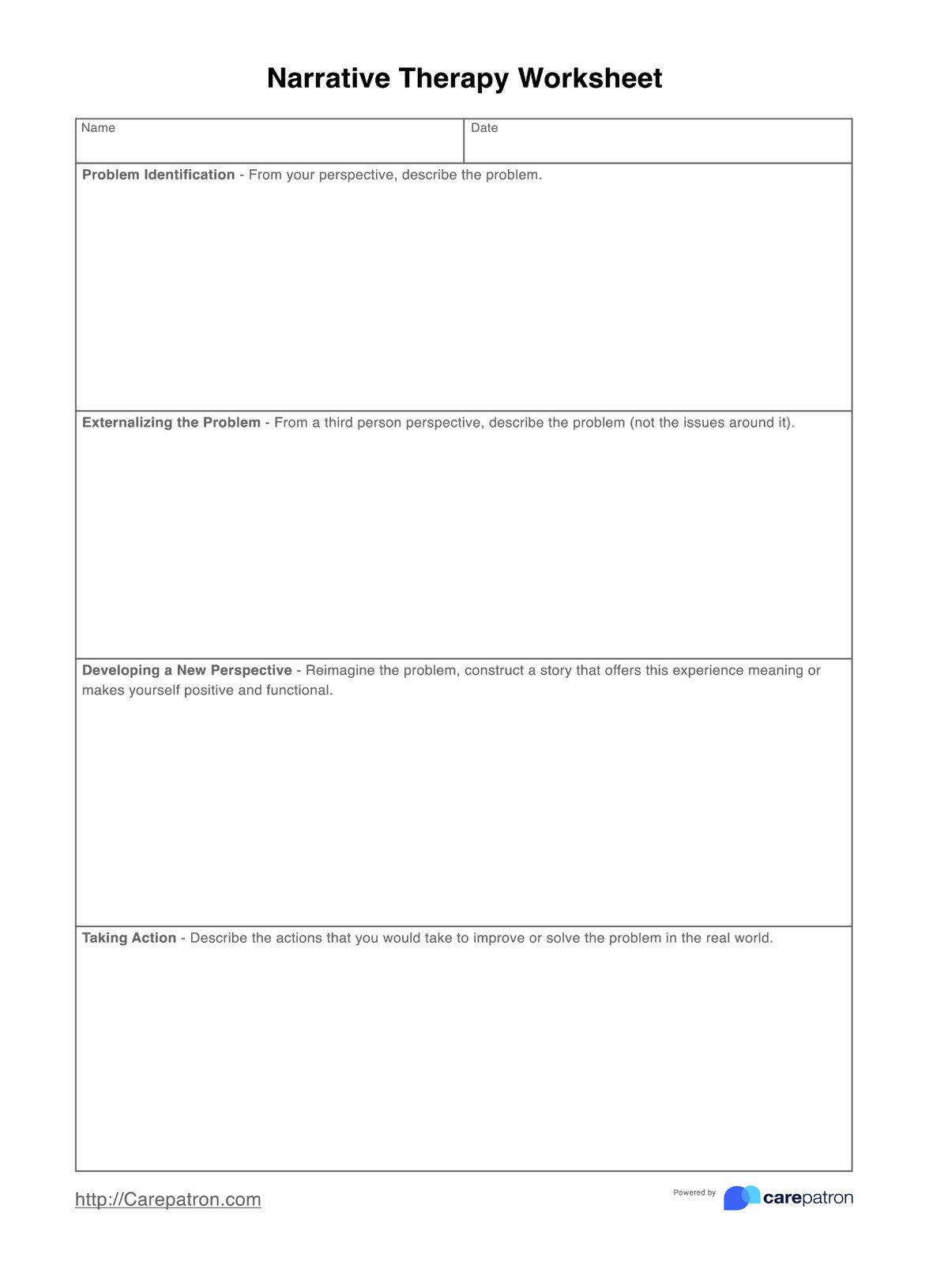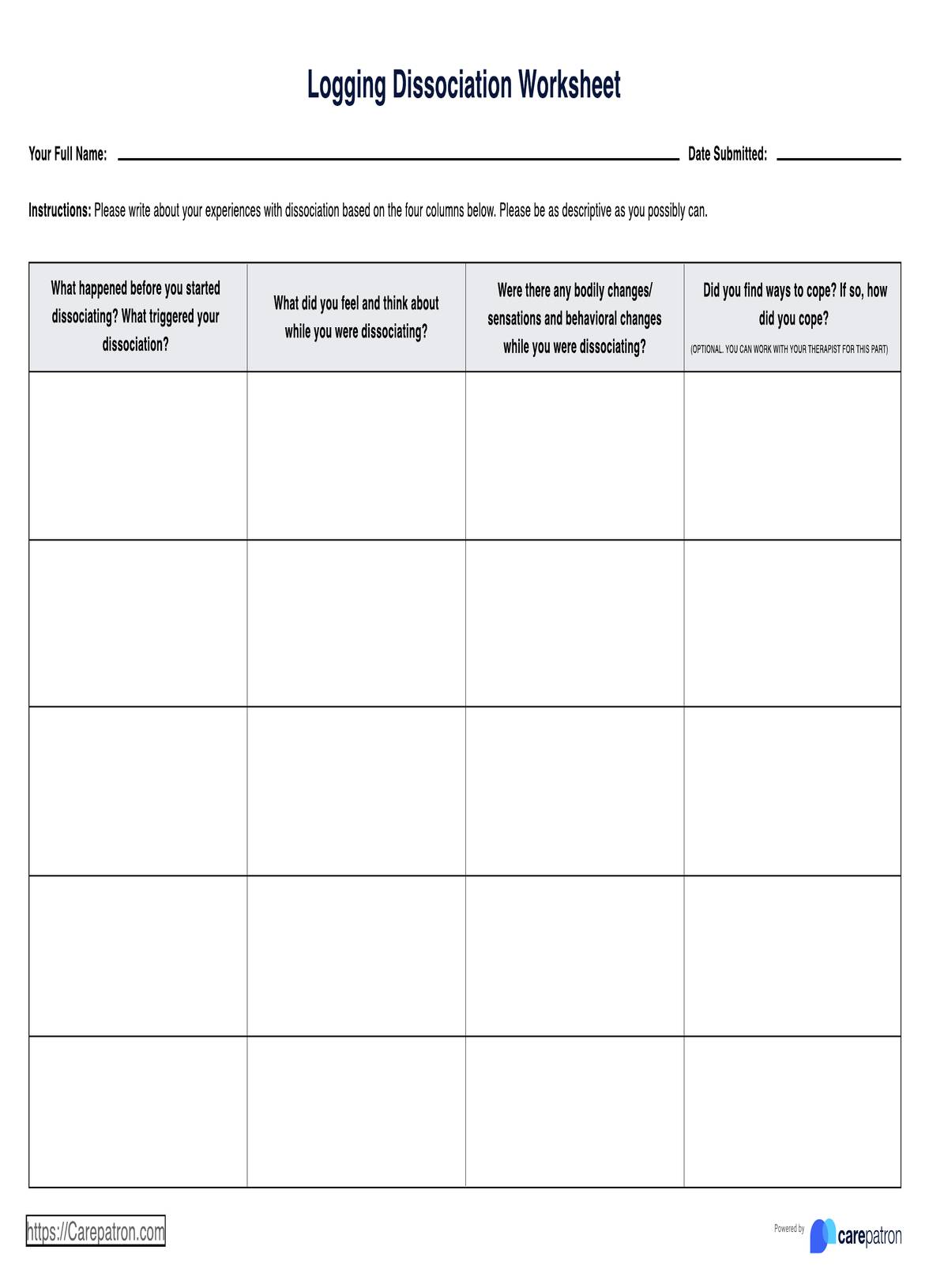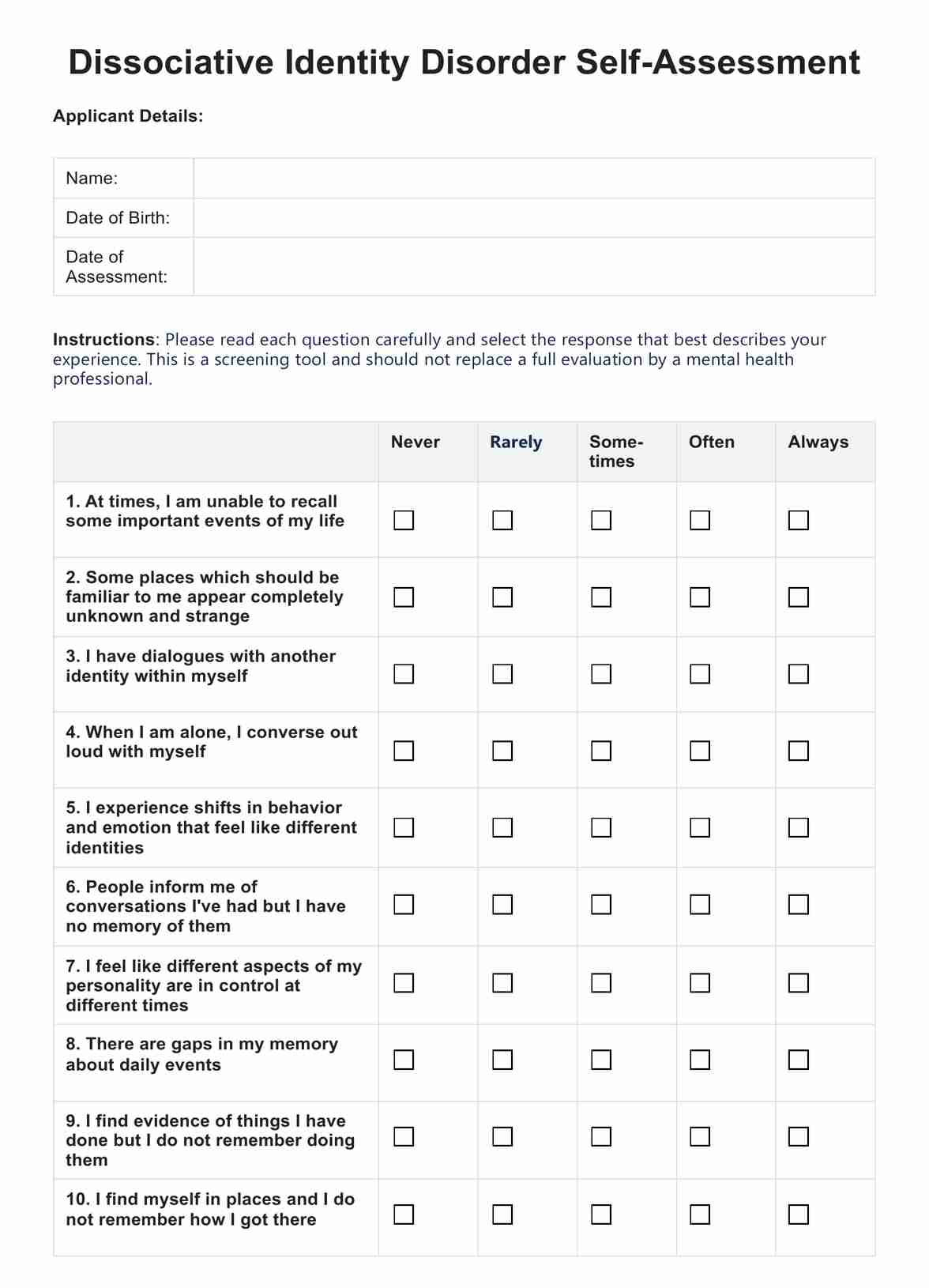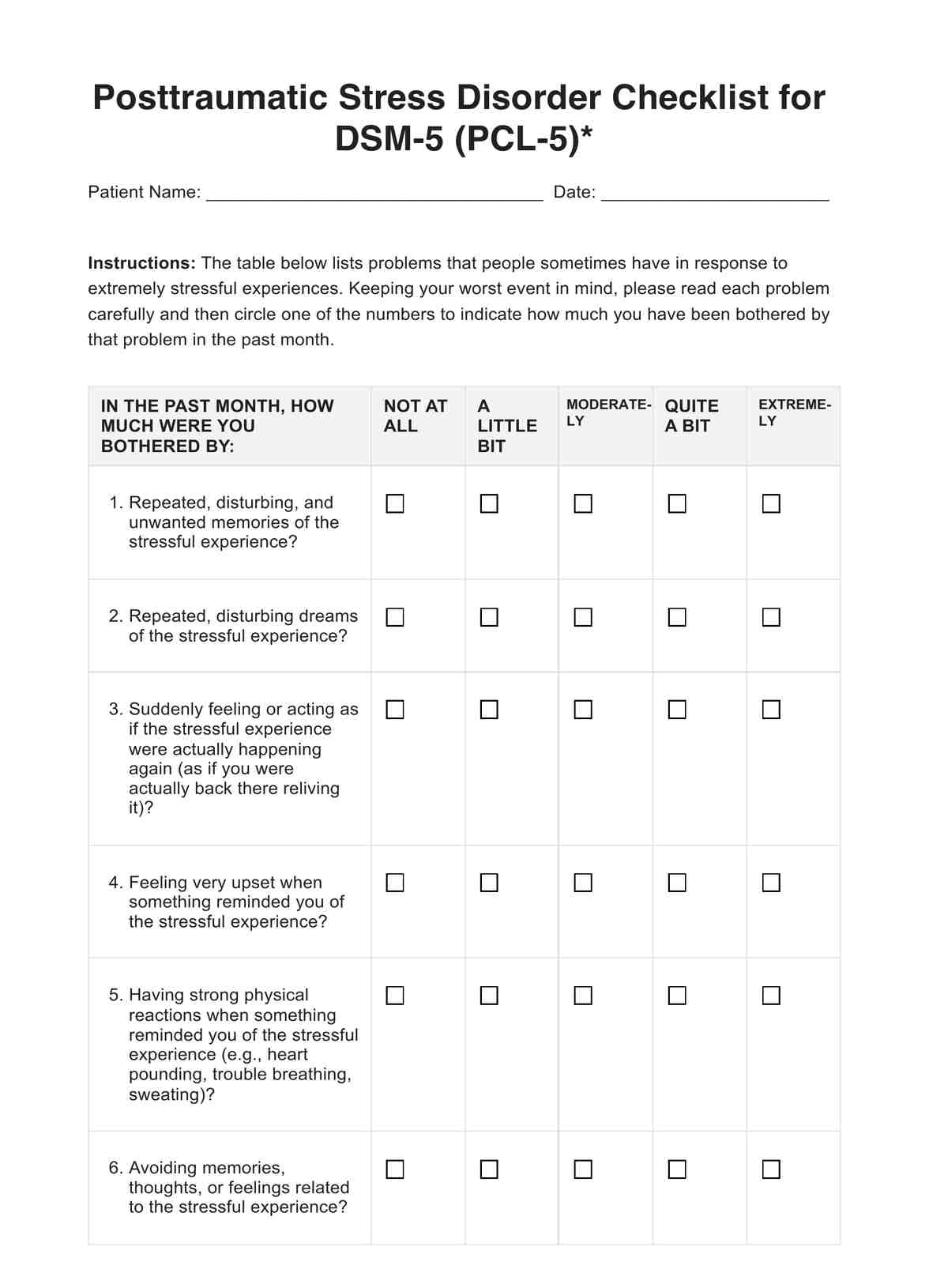Pain Catastrophizing Scale
Use this Pain Catastrophizing Scale to gauge how much your patient thinks about their pain and how they expect it to worsen. This information will allow you to help your client decatastrophize their pain.


What is the Pain Catastrophizing Scale?
Pain Catastrophizing is a type of response to experiencing pain where a person in pain tends to magnify what they feel, which leads them to think that the pain they are feeling is more painful than it actually is.
To gauge people who catastrophize their pain, the was created by MJL Sullivan, S Bishop, and J Pivik back in 1995. This type of assessment seeks to examine a patient by checking how much and how often they dwell on their pain-related thoughts and feelings, if they have the tendency to exaggerate the severity of what they are feeling, and if they feel like they have no control over their pain.
It’s a simple scale that comes in the form of a thirteen-item questionnaire. The patient simply needs to rate themselves based on the following prompts:
- I worry all the time about whether the pain will end
- I feel I can’t go on
- It’s terrible and I think it’s never going to get any better
- It’s awful and I feel that it overwhelms me
- I feel I can’t stand it anymore
- I become afraid that the pain will get worse
- I keep thinking of other painful events
- I anxiously want the pain to go away
- I can’t seem to keep it out of my mind
- I keep thinking about how much it hurts
- I keep thinking about how badly I want the pain to stop
- There’s nothing I can do to reduce the intensity of the pain
- I wonder whether something serious may happen
Pain Catastrophizing Scale Template
Pain Catastrophizing Scale Example
How to use the Pain Catastrophizing Scale
Administer the scale to your patient.
The first thing you need to do is administer the Pain Catastrophizing Scale to your patient. You can do so in the following ways:
- You may simply hand this scale to them. The Pain Catastrophizing Scale is a self-report assessment in the first place, so you can just hand a copy to your patient and have them complete it on the spot, or have them take it home and submit it to you online or during your next appointment.
- You may conduct it like an interview. If you would rather have the client answer on the spot, you can administer this scale during a session. You need only mention each item to them and instruct them to answer with any of the following per prompt:
- Not at all
- To a slight degree
- To a moderate degree
- To a great degree
- All the time
Calculate the scores and determine the next course of action.
After you receive a fully-accomplished Pain Catastrophizing Scale, the next step involves calculating the scores.
Each item can score between 0 to 4. The possible answers are sequenced to reflect that from left to right, with “Not at all” being equivalent to 0, while “All the time” is equal to 4. The maximum score is 52, with higher scores pointing to higher levels of pain catastrophizing.
There are no score ranges for this, however. What you will need to do is to look at the total score as well as all the individual ratings they gave. You will base the next steps on these.
Do you need to talk to your patient more so they have more opportunities to elaborate? Do you need to have them engage with more assessments and worksheets? Or, have you already received all the information you need to develop a treatment plan?
These are just some of the questions that you can answer by checking the total score and considering the individual ratings per item.
When does one typically use the Pain Catastrophizing Scale?
Since this Pain Catastrophizing Scale was created in order to help healthcare practitioners gauge their patients, the best time to issue this would be during the early stages of your treatment with them.
Don’t just simply hand it out, though! Pain Catastrophizing is just like any other mental health issue. It’s not something that is easy to talk about, so making sure that your patient is comfortable and is in a no-judgment zone should be one of your first priorities. One part of catastrophizing is exaggerating problems, after all, so you don’t want to lead with “We want to check if you are exaggerating your pain.” Explain what the scale is for and ensure them that it will help with creating a tailor-fitted treatment plan for them.
While this scale is used to gauge patients, the early stages of treatment aren’t the only times that it can be used.
Let’s say that you have already implemented a treatment plan for your patient and you want to see how they are doing. Reissuing this scale should give you a good idea if your patient is getting better and whether your treatment plan is working.
Who can use the Pain Catastrophizing Scale?
Numerous healthcare professionals may use the Pain Catastrophizing Scale for their work. Some of them include:
- Psychologists
- Psychiatrists
- Physicians
- Physical therapists
- Occupational therapists
- Nurses
While numerous professionals may use this, it is important for them to specialize and to be trained when it comes to pain management and psychology so that their interpretations of the scale results are informed by the proper knowledge and experience, especially since this scale doesn’t have set score ranges and designations. A patient’s pain catastrophizing may also be the result of other problems, so it’s prudent for healthcare professionals to look beyond using this scale and incorporate other instruments alongside it to better inform their interpretations and decisions.

What are the benefits of using the Pain Catastrophizing Scale?
It can save the professional some time.
How is this scale a timesaver? Given its length (only thirteen items!) and the rating system being straightforward, it can easily be accomplished, whether you conduct it as an interview in person or have your patient answer it on their own.
It can help determine what other possible angles a professional must consider.
While the Pain Catastrophizing Scale is a widely used instrument when it comes to gauging the patient’s level of catastrophizing, remember that catastrophizing may be the result of other factors like anxiety, stress, and depression. This means that, despite being a trusted instrument, it may not be enough. So using it should help professionals consider other possible angles when it comes to evaluating the patient.
Do you need to assess the patient’s psychological distress? What about their anxiety? Depression, perhaps? These are the questions that you may get an answer to after interpreting the scores of the Pain Catastrophizing Scale.
It can lead to the development of tailor-fitted treatment plans.
Speaking of considering possible angles, the use of the Pain Catastrophizing Scale can lead to the development of a tailor-fitted treatment plan for the patient, especially if the scale was used alongside other types of assessments. The patient might be experiencing more than just pain catastrophizing. They might be experiencing anxiety, depression, stress, and more, so a general treatment plan may not be the best choice.
It can serve as a reliable monitoring tool.
As mentioned earlier, the use of the Pain Catastrophizing Scale doesn’t have to be during the early stages of treatment.
Let’s say you have already assessed your patient as comprehensively as possible and you have implemented a treatment plan for your patient. You can use this scale again at a later time (up to you as to when) to check on your patient’s progress. Do they catastrophize less? Do they no longer catastrophize at all? Are they getting better in general?
It will also help you determine if your treatment plan is working or not. If the results of reusing the scale lead to a score that shows that they are not getting better, then obviously something is not working, whether just some aspects of your treatment plan or its entirety. Whichever the case, this scale should help you determine what adjustments to make.
Commonly asked questions
This doesn’t measure a specific kind of pain but the level of catastrophizing of pain. Whether it’s chronic pain or pain caused by diseases like cancer, this scale should serve the professional well.
Yes. Even if there are no score ranges and specific designations, what you should consider besides the total score are the specific answers of the patient. Looking at their answers should help you determine what to do next. Also, the score is still something you can work with. Remember that the higher the score is, the higher the level of their pain catastrophizing.
It should not take anyone longer than ten minutes given that the items are straightforward and the answer choices are set for the patient. Of course, it might be possible for it to go beyond, but that depends on the patient and how long they think about each item before answering. But generally, it takes between five to ten minutes.





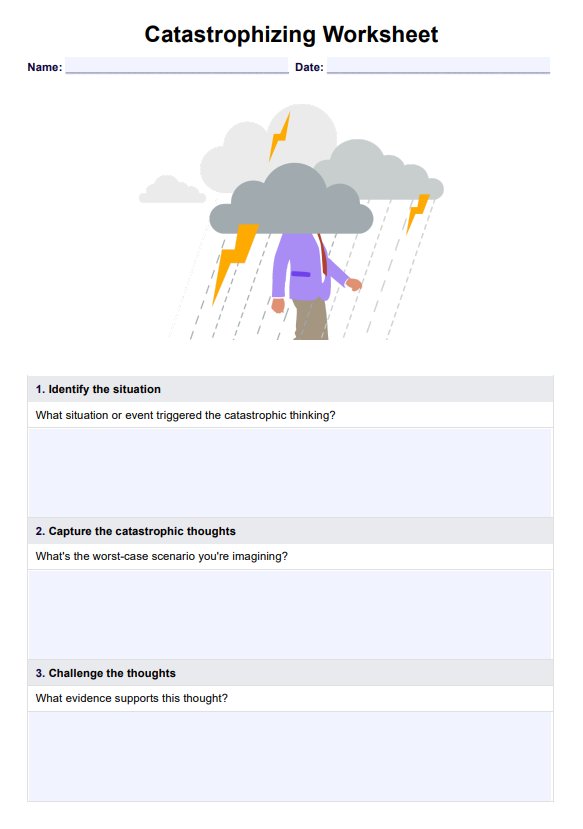












-template.jpg)























































































